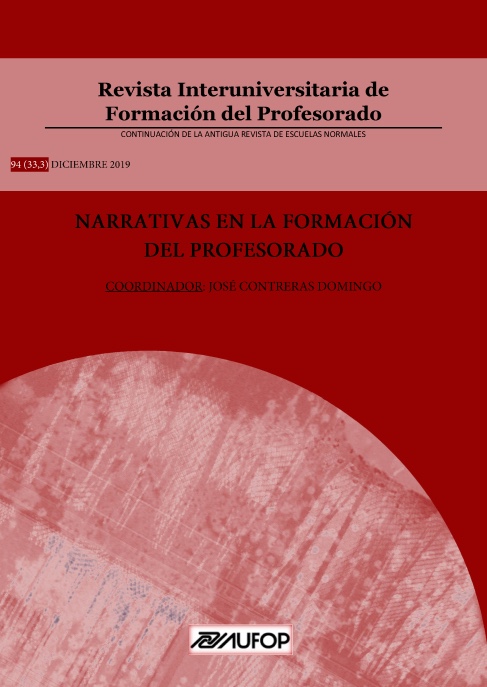La enseñanza de ciencias sociales en educación primaria mediante el modelo de aula invertida
DOI:
https://doi.org/10.47553/rifop.v33i3.74402Resumen
El modelo de aula invertida ha creado un gran interés en la educación primaria ya que se basa en un enfoque centrado en el alumno y promueve el aprendizaje activo. Además, permite a los maestros involucrar de manera más efectiva a los alumnos de primaria en su experiencia de aprendizaje mediante el desarrollo de sus conocimientos y habilidades científicas y tecnológicas. Invierte el entorno de aprendizaje convencional al ofrecer contenido instructivo, a menudo accesible a través de sitios web, fuera de la escuela. Por lo tanto, es un enfoque de aprendizaje combinado que permite la interacción cara a cara y el estudio independiente a través de la tecnología. Bajo este enfoque, los estudiantes trabajan bajo la supervisión del maestro, mientras acceden al contenido en casaCitas
Abeysekera, L., & Dawson, P. (2015). Motivation and cognitive load in the flipped classroom: definition, rationale and a call for research. Higher Education Research & Development, 34(1), 1-14. https://doi.org/10.1080/07294360.2014.934336
Aidinopoulou, V., & Sampson, D. G. (2017). An action research study from implementing the flipped classroom model in primary school history teaching and learning. Journal of Educational Technology & Society, 20(1), 237-247.
Bhagat, K. K., Chang, C. N., & Chang, C. Y. (2016). The impact of the flipped classroom on mathematics concept learning in high school. Journal of Educational Technology & Society, 19(3), 134-142.
Bishop, J. L., & Verleger, M. A. (2013). The flipped classroom: A survey of the research. In ASEE national conference proceedings, 30(9), 1-18. Atlanta, GA.
Butt, A. (2014). Student views on the use of lecture time and their experience with a flipped classroom approach. Bus Educ Accredit 6(1):33–43.
Cheng, L., Ritzhaupt, A. D., & Antonenko, P. (2019). Effects of the flipped classroom instructional strategy on students’ learning outcomes: A meta-analysis. Educational Technology Research and Development, 67(4), 793-824. https://doi.org/10.1007/s11423-018-9633-7
Flipped Learning Network. (2014). The four pillars of F-L-I-P. Recuperado de http://flippedlearning.org/cms/lib07/VA01923112/Centricity/Domain/46/FLIP_handout_FNL_Web.pdf [Google Scholar]
Fulton, K.P. (2012). 10 Reasons to Flip. Phi Delta Kappan, 94(2), 20–24. https://doi.org/10.1177/003172171209400205
Galindo-Domínguez, H. (2018). Un meta-análisis de la metodología flipped classroom en el aula de educación primaria. EDUTEC. Revista Electrónica de Tecnología Educativa, (63), 73-85. https://doi.org/10.21556/edutec.2018.63.983
Martínez, A. & Hernando, A. (2015). Cómo darle la vuelta al aula: flipped classroom, una metodología para la interacción, la colaboración, el compromiso y la motivación en la clase de ELE. En Marimoto, Y., Pavón, M.V., y Santamaría, R. (editoras), La enseñanza de ELE centrada en el alumno (pp. 1117-1124). XXV Congreso Internacional ASELE. Copysan. Navarra. España. https://doi.org/10.5151/edupro-clafpl2016-058
Millard, E. (2012). 5 Reasons Flipped Classrooms Work: Turning lectures into homework to boost student engagement and increase technology fueled creativity. University Business, 26–29. http://www.universitybusiness.com/article/5-reasons-flipped-classrooms-work
Milman, N. (2012) The flipped classroom strategy: What is it and how can it be used? Distance Learning ,9(3), 85–87.
Tsai, C. W., Shen, P. D., & Lu, Y. J. (2015). The effects of Problem-Based Learning with flipped classroom on elementary students' computing skills: A case study of the production of Ebooks. International Journal of Information and Communication Technology Education (IJICTE), 11(2), 32-40. https://doi.org/10.4018/ijicte.2015040103
Wallace, M. L., Walker, J. D., Braseby, A. M., & Sweet, M. S. (2014). " Now, What Happens During Class?" Using Team-Based Learning to Optimize the Role of Expertise Within the Flipped Classroom. Journal on Excellence in College Teaching, 25.
Xinglong, Z. (2014). The Design of Teaching Mode Based on Knowledge Construction in Flipped Classroom [J]. Modern Distance Education Research, 2, 55-61.
Zainuddin, Z., & Halili, S. H. (2016). Flipped classroom research and trends from different fields of study. The International Review of Research in Open and Distributed Learning, 17(3). https://doi.org/10.19173/irrodl.v17i3.2274
Zappe, S., Leicht, R., Messner, J., Litzinger, T., & Lee, H. W. (2009). “Flipping” the classroom to explore active learning in a large undergraduate course. In Proceedings of the 2009 American Society for Engineering Education annual conference and exhibition. Recuperado de https://peer.asee.org/4545
Descargas
Publicado
Cómo citar
Número
Sección
Licencia
The "Revista Interuniversitaria de Formación del Profesorado (RIFOP)", with ISSN print 0213-8646 and ISSN electronic 2530-3791), adheres to the copyright notices proposed by Creative Commons
Authors’ rights
Papers published in the journal are subject to the following terms:
1. The Asociación Universitaria de Formación del Profesorado (AUFOP) is the editor of the RIFOP and holds the copyright of the papers published therein. The reuse of these is allowed under the license for use as indicated under point 2.
© Asociación Universitaria de Formación del Profesorado (AUFOP)
2. The papers are published in electronic version under the license CreativeCommons Reconocimiento-NoComercial-SinObraDerivada 3.0 España (texto legal). Papers can be copied, used, disseminated, transmitted and publicly exhibited provided that: i) the authorship and original publication source are cited (journal, editors and URL of the paper); ii) they are nit used for commercial gain; iii) the existence and specifications of the license for use are mentioned.
3. Auto-archiving conditions. Authors are allowed and encouraged to disseminate electronic pre-print versions (versions prior to peer review) and/or post-print (versions reviwed and accepted for publication) of their papers prior to their publication, since this favors prompt circulation and dissemination and supposes a possible increase in cites and scope within the academic community.
Privacy declaration
The names and email addresses incorporated into this journal will be used solely for the declared purposes of the journal and will not be available for any other purposes or to third parties.






